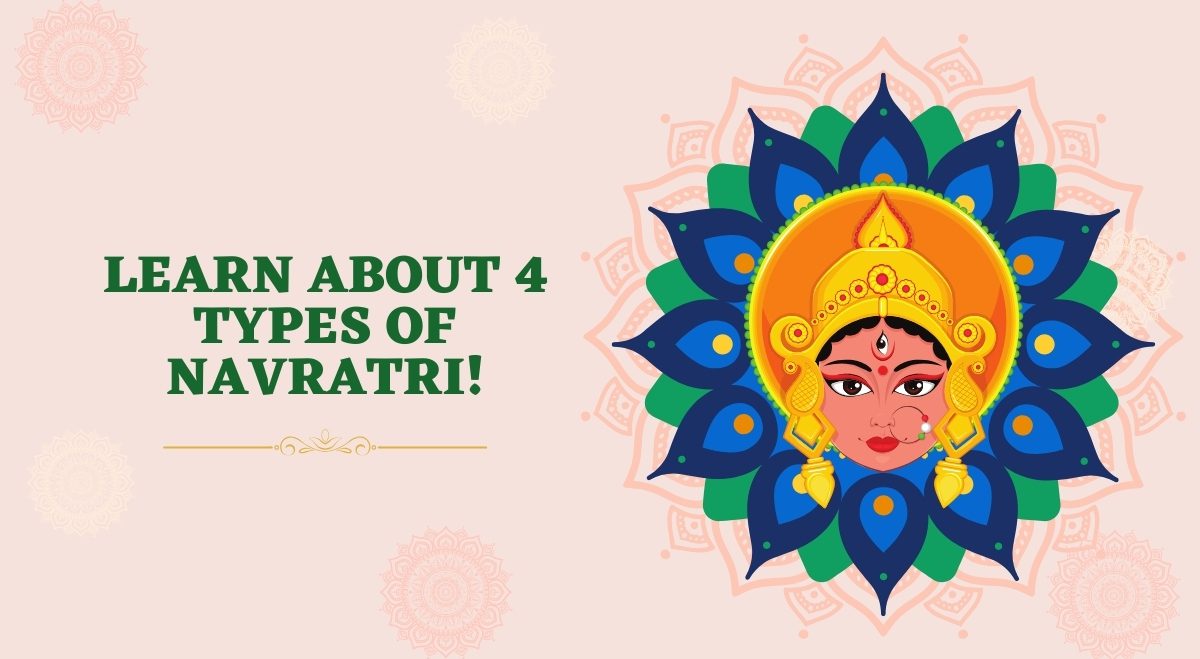Navratri, meaning “nine nights” in Sanskrit, is among the most significant and widely celebrated Hindu festivals. While many are familiar with the popular Shardiya Navratri, four distinct types of Navratri are observed throughout the year. Each has its unique timing, customs, and spiritual significance. Let’s explore these four Navratris in detail.
Shardiya Navratri, also known as Maha Navratri, is the most prominent and widely celebrated of the four Navratris.
Timing: It falls in autumn, typically in September or October.
Significance: This Navratri celebrates the victory of Goddess Durga over the demon Mahishasura, symbolizing the triumph of good over evil.
Celebrations:
- Elaborate pandals (temporary structures) are set up to house idols of Goddess Durga
- Fasting is common, with many devotees abstaining from meat, alcohol, and certain grains
- Garba and Dandiya Raas dances are popular, especially in Gujarat and Maharashtra
- The festival culminates in Dussehra, celebrating Lord Rama’s victory over Ravana
Regional Variations:
- In West Bengal, it’s celebrated as Durga Puja with grand processions and cultural events
- South India focuses more on Saraswati Puja during this time
Chaitra Navratri marks the beginning of the Hindu lunar calendar and coincides with the arrival of spring.
Timing: It occurs in March or April, during the Chaitra month of the Hindu calendar.
Significance: This Navratri celebrates the nine forms of Goddess Durga and marks the Hindu New Year in many regions.
Celebrations:
- Ghatasthapana ritual to invoke the goddess
- Fasting and prayers are common
- The ninth day is celebrated as Ram Navami, Lord Rama’s birthday
Regional Variations:
- In Maharashtra, it’s celebrated as Gudi Padwa
- Ugadi in Andhra Pradesh, Telangana, and Karnataka
- Navreh in Kashmir
Magha Navratri is a lesser-known but spiritually significant Navratri.
Timing: It falls during the Magha month (January-February) of the Hindu calendar.
Significance: This Navratri is dedicated to Goddess Shakti and is considered a time for intense spiritual practices.
Celebrations:
- Primarily observed by tantric practitioners and spiritual seekers
- Involves meditation, mantra chanting, and special rituals
- Not as widely celebrated with public festivities
Ashada Navratri, also known as Gupt Navratri, is the most esoteric of the four Navratris.
Timing: It occurs during the Ashada month (June-July) of the Hindu calendar.
Significance: This Navratri is associated with secret tantric practices and is believed to be a powerful time for spiritual growth.
Celebrations:
- Observed mainly by tantric practitioners and advanced spiritual seekers
- Involves secret rituals, meditation, and mantra chanting
- Not typically celebrated publicly
| Aspect | Shardiya Navratri | Chaitra Navratri | Magha Navratri | Ashada Navratri |
|---|---|---|---|---|
| Timing | September-October | March-April | January-February | June-July |
| Main Goddess | Durga | Durga | Shakti | Shakti |
| Public Celebration | Widespread | Common | Limited | Rare |
| Fasting Practices | Very common | Common | Varies | Limited |
| Regional Importance | Pan-India | North and West India | Varies | Limited |
While all four Navratris honor the divine feminine, they each have unique characteristics and levels of public observance. Shardiya and Chaitra Navratris are the most widely celebrated, while Magha and Ashada Navratris tend to be more focused on personal spiritual practices.Understanding these different types of Navratri gives us insight into the rich tapestry of Hindu traditions and the various ways devotees connect with the divine throughout the year. Whether through grand public celebrations or quiet personal rituals, each Navratri offers an opportunity for spiritual growth and cultural expression.

